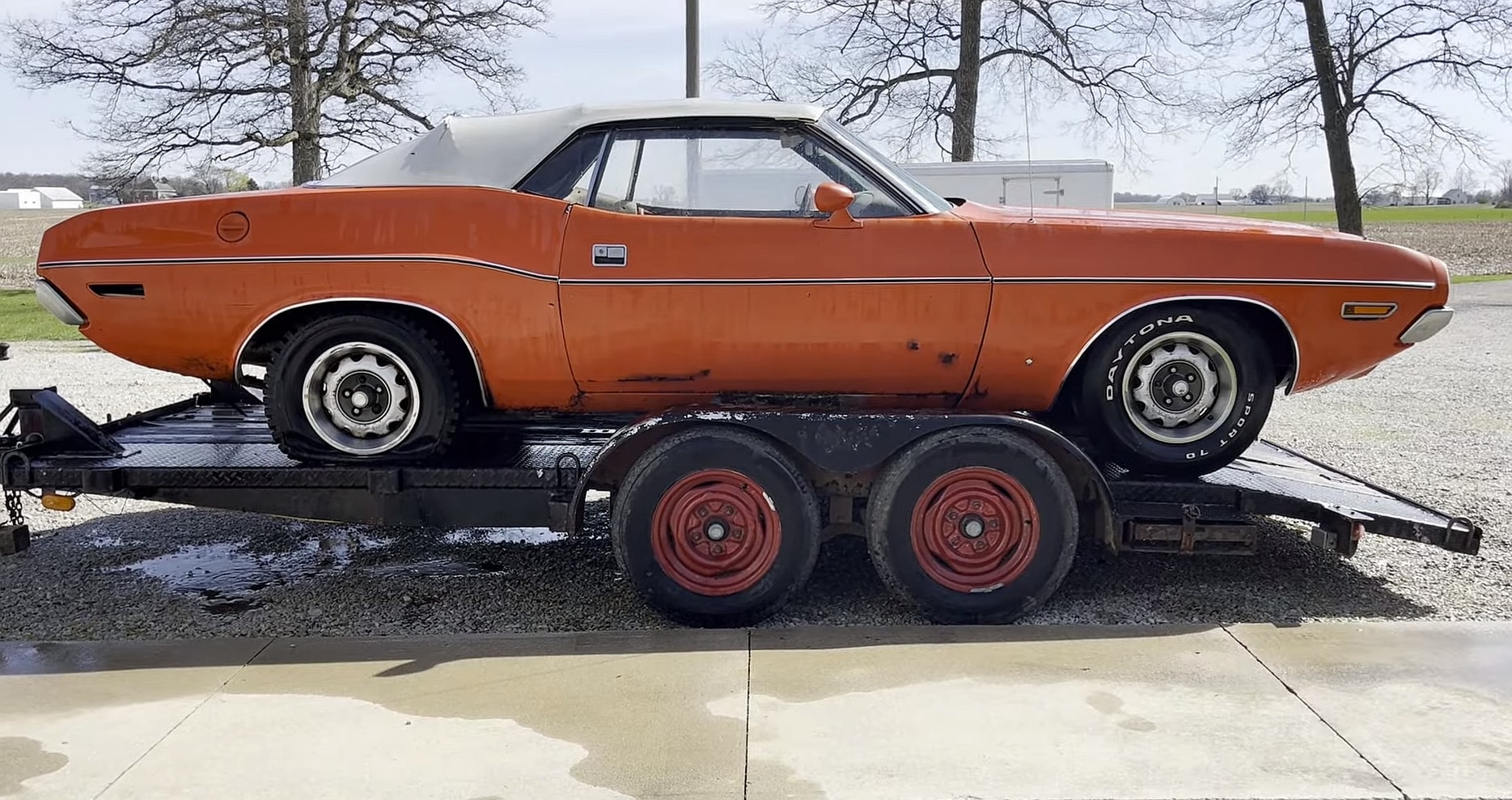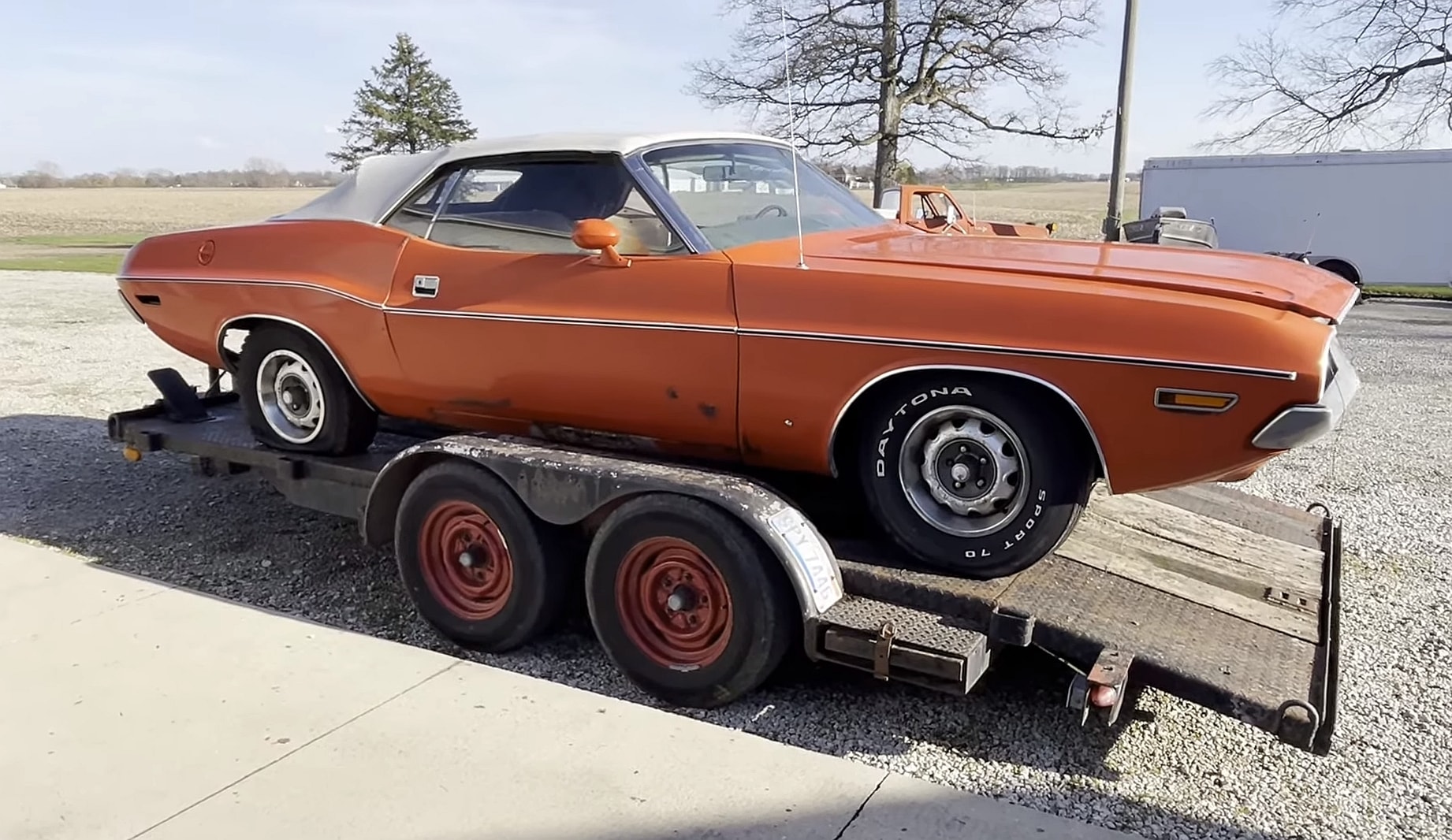A month ago, the automotive world was abuzz with the rediscovery of a 1971 Dodge Challenger after 44 years of hibernation in a barn. This rare convertible, still boasting its original engine, emerged as a survivor, capturing the attention of enthusiasts.
The significance of this Challenger became apparent upon revealing its history. Only two model years, 1970 and 1971, saw the availability of the first-generation Challenger as a drop-top, with limited production numbers. Among them, this HEMI Orange specimen, one of 1,870 convertibles in 1971, equipped with a 318-cubic-inch V8 and automatic transmission, stands out as a piece of automotive history.

Delving into its past, it was revealed as one of the official pace cars for the 1971 Indianapolis 500, a testament to Dodge dealerships’ initiative amidst emission regulations. After the race, these pace cars were repurposed and sold, with this example, number 29 of 50, finding its way to Miami.
Despite a rear-end collision in 1980, marking its end on the road, its resurrection in 2024 signifies a bright future. With plans to restore its originality while honoring its Indy 500 heritage, this Challenger stands as a survivor, embodying the spirit of its era.

